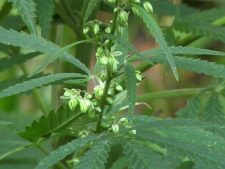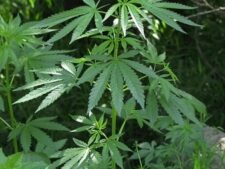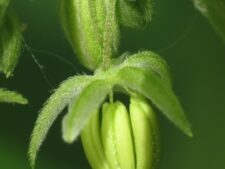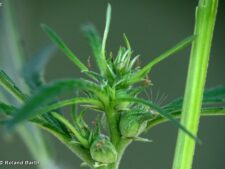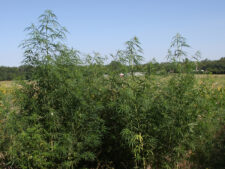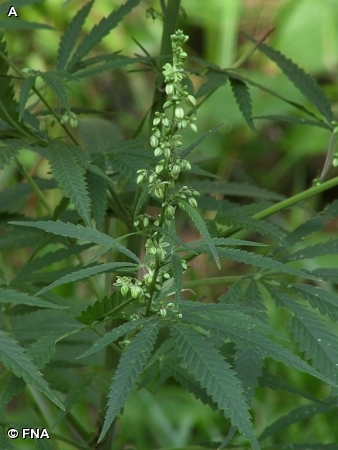
This annual, introduced from Asia, grows to 10 feet and taller. The erect stems and stout branches carry distinctive leaves, which have 3-9 long, narrow and coarsely toothed leaflets (palmately divided), each up to 6 inches long (A,C). Male and female flowers and are found on separate plants. Male plants have more obvious greenish flowers which turn pale yellow or cream as they mature. They occur on spikes or in branching clusters up to 1 foot long at or near the top of the plant (A,B,D). Female plants have greenish flowers on much shorter spikes up to 1 inch long. Photo (E) shows the fruit of the female plant.
Grows along roadsides, railroad tracks and other disturbed, sunny areas, flowering from June through September. Common along roadsides or in sunny disturbed sites at Fontenelle Forest and Neale Woods.
Marijuana has a long history of human use for medicine, industrial fiber and seed oil. The plants growing in our area are descendents from a field crop planted for hemp fiber, which was introduced during the second half of the 19th Century. The subspecies grown and harvested for its psychoactive effects has not been found growing wild in our area. Hundreds of chemicals other than psychoactive compounds it is known for are produced by this plant, including volatile sulfur containing compounds responsible for its pungent, skunk-like odor.
A commonly used alternate name is Hemp. Other, more colorful alternate names include grass, pot and ditchweed.
The content of NatureSearch is provided by dedicated volunteer Naturalists of Fontenelle Forest who strive to provide the most accurate information available. Contributors of the images retain their copyrights. The point of contact for this page is: Roland Barth.

 Identification
Identification